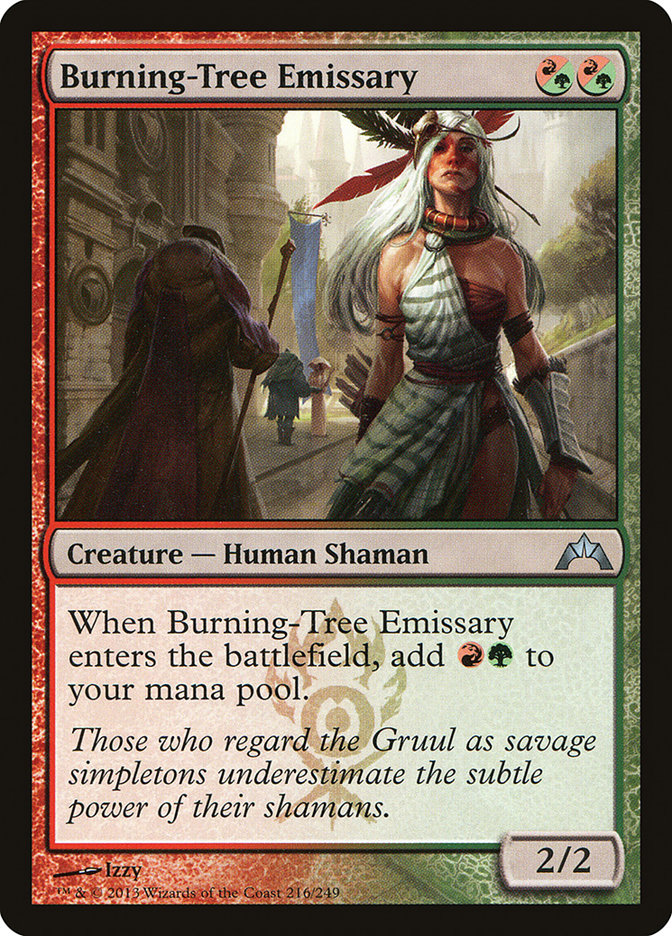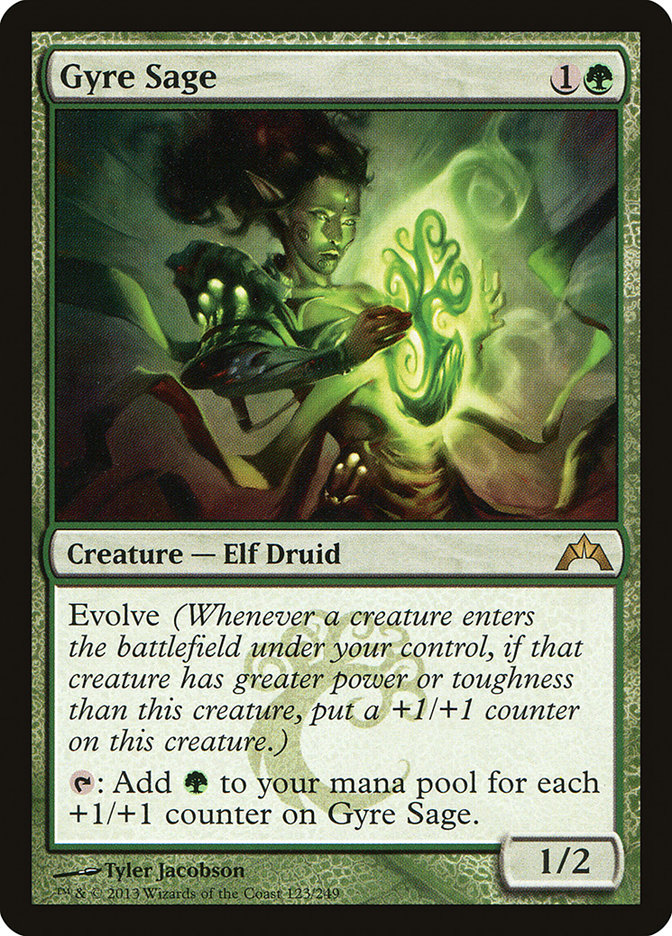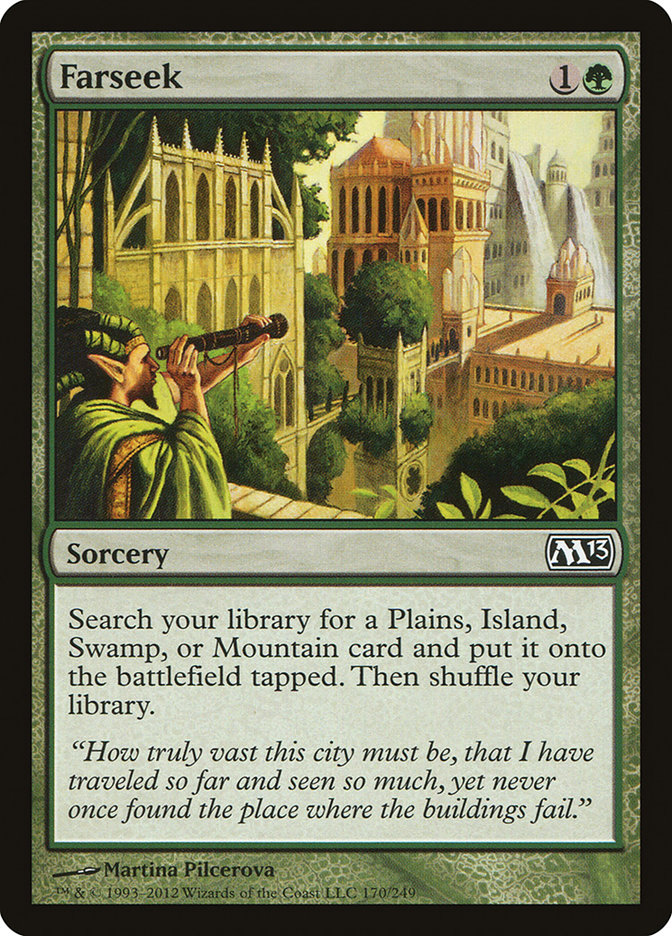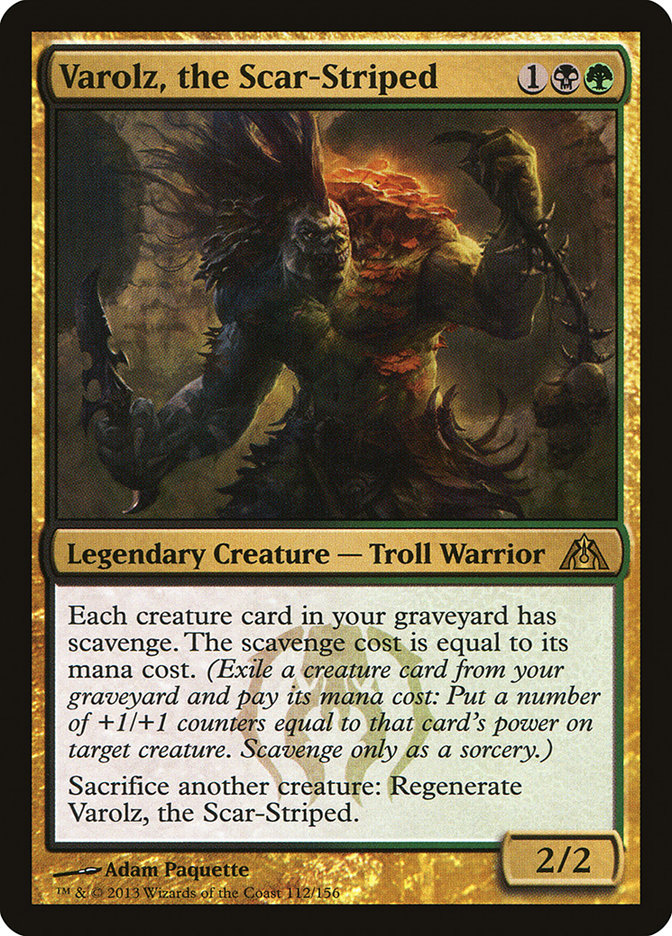It didn’t make sense for me to go to Miami. Tickets were too expensive. The flight to get there was really long. I’d have to leave for the event just days after I got back from a week in Las Vegas. And yet I went because it was Standard and I was really looking for a chance to play the format. I’d seen all kinds of results rolling in from SCG Standard Opens and PTQs around the country, and I wanted to try my hand at figuring the whole thing out.
Last week I wrote about what I felt were the most underplayed cards in Standard. In Miami, I put my money where my mouth is and played all of them. I really liked my deck going in and still like it despite doing poorly in the tournament. My failure in the tournament had nothing to do with flaws in my deck and everything to do with my mistakes as a player.
My brief time at home between my trip to Las Vegas and leaving for Miami was jammed full of catching up on work to get SolForge ready for its launch via Steam Early Access, leaving me with little opportunity to rest and recover. Come tournament time, I played absolutely terribly. In my one on-camera feature match, I let the way game 1 played out incorrectly influence my sideboarding decisions and left Bonfire of the Damned in against Bant Control when it’s simply a terrible card in the matchup.
Against Bant Hexproof in the next round, I randomly let my opponent untap with an Invisible Stalker when I could have Bonfired it away and promptly got what I deserved when he put an Unflinching Courage on it the following turn, leaving me as good as dead. Even against Jund, in my last match of the tournament before I dropped, I managed to simply fail to do math correctly and left myself dead on board when I could have easily come back to win by pinging a different creature so I could take control of it with Olivia Voldaren. Not my finest showing, to say the least. I think I left half of my brain in Vegas.
It’s a shame, too, because I think my deck was very good. The only other people who played it in the tournament were William "Baby Huey" Jensen and Owen Turtenwald, who both made day 2, with Huey putting up a Top 32 finish. If I could play the tournament over, I’d play the same deck again in a heartbeat.
For those of you who didn’t catch it in the coverage, here’s the list I played:
Creatures (26)
- 4 Arbor Elf
- 4 Strangleroot Geist
- 4 Falkenrath Aristocrat
- 4 Huntmaster of the Fells
- 4 Thundermaw Hellkite
- 4 Flinthoof Boar
- 2 Varolz, the Scar-Striped
Lands (18)
Spells (16)

This deck began as a reaction to the popularity of Lingering Souls decks in the format. When I started working on it, Aristocrats decks were everywhere between the original, Act 2, and Junk varieties. I really wanted to play a deck with both Thundermaw Hellkite and Bonfire of the Damned because they not only match up exceptionally well with all of the small creatures in the format but also happen to be extremely powerful in their own right. I had played a lot of G/R Aggro in the previous Standard format and dabbled a bit with the version splashing black for Falkenrath Aristocrat that Cedric Phillips played to a Standard Open Top 8, so I had a bit of context for where I wanted to start.
The biggest difference between that format and the new one is the presence of Voice of Resurgence. Voice makes trying to attack on the ground much worse, especially if you’re doing it with small creatures. This dramatically impacts the effectiveness of Burning-Tree Emissary, which previously played a central role in aggressive G/R decks. Even a multiple Emissary draw can be stymied by even a single Voice, especially backed up by something like a Cartel Aristocrat. I was already pretty down on Burning-Tree before since it’s such a low impact card any time after the second turn, so it didn’t take much of a drop in its stock for me to want to cut it.
Without Burning-Tree, Gyre Sage was the next obvious cut. I had been similarly unimpressed by Sage for a while since it was another weak draw in the mid to late game that had the added cost of requiring you to play out your turns in a very particular way in order for it to be effective. Sage was always pretty awkward in hands with Arbor Elf since you often didn’t have any good time to play it once you started accelerating into bigger threats, leaving you with a relatively weak creature in hand when you were done curving out. Sometimes Sage was awesome as a Tarmogoyf that could also help you play your bigger spells, but too often it was just a Squire—and that just didn’t cut it.
Speaking of big spells, those were the reason that G/R was actually exciting to me, and I wanted to take better advantage of them. Both the G/R and Jund Aggro decks pre-Dragon’s Maze were in the awkward spot of having a ton of cheap threats and a relatively low land count alongside mana-intensive cards like Thundermaw Hellkite and Bonfire. Since these higher-end cards were the big draw of the deck to me, I wanted to make them better by replacing the two-drop creatures I cut with a spell in the same place on the curve that helps me actually play them:
As I mentioned in my article last week, it’s very strange to me that so few decks play Farseek right now. It’s one of the best cards in the format, providing the most efficient mana fixing and acceleration you’re going to get. I was talking with William Jensen during the Grand Prix Miami finals, and he suggested that Farseek is by far the most important card in Reid’s winning Jund deck and that the deck’s win rate is probably around 10-20% higher in games with Farseek than those without.
Farseek is similarly powerful in an aggressive Jund deck like this one. Being able to accelerate out Aristocrats and Dragons can put you incredibly far ahead. With eight total accelerators between Farseek and Arbor Elf, it’s not uncommon to be able to play a third turn Thundermaw Hellkite even, which puts your opponent on quite the clock. The mana fixing it provides also allows you to play off-color spells more consistently without having to resort to playing things like Borderland Ranger. While I can appreciate a good value card, Borderland Ranger just doesn’t quite cut it in a world filled with cheaper creatures that dramatically outclass it. If you’re able to trade a Ranger for something else, it’s great, but it’s not quite as impressive when it can’t even profitably block most creatures below it on the mana curve.
Instead of Borderland Ranger at three, I have Varolz, the Scar-Striped. Varolz has quickly become one of my favorite cards in recent memory because it provides so much power for such a low cost. One of the important things about playing a deck with as much mana production as this one has—23 lands plus four Arbor Elfs and four Farseeks—is that you need to have ways to actually take advantage of that mana without just having a bunch of expensive cards in your deck.
Varolz is perfect for this because you can cast him on curve at three as a totally reasonable threat (especially if you have an Elf or Strangleroot Geist to give him regeneration cover) and later in the game he gives you a mana sink that gives you a ton of value. I especially like the synergy between Varolz and Huntmaster of the Fells. With Varolz in play, you can spend a bunch of mana to scavenge on your turn, and since you didn’t cast a spell you still get to flip your Huntmaster—and Ravager of the Fells happens to be a big fan of +1/+1 counters given that it has trample.
Varolz also helps make this deck even more resilient to removal. Between Varolz, Strangleroot Geist, and Falkenrath Aristocrat—not to mention so many creatures that have or can gain haste—this is one of the most Supreme Verdict proof decks I’ve played in a long time. While Verdict itself has fallen somewhat out of favor recently, the same applies to a lot of the removal your opponents will find themselves stuck with. Many of the threats in this deck require very specific answers to deal with, and your opponent can easily find themselves without what they need in time.
Playing Jund also gives you access to a lot of powerful sideboard options. Against creature decks, you can sideboard into a reasonable facsimile of a Jund control deck, swapping your aggressive cards like Falkenrath Aristocrat and Thundermaw Hellkite for Olivia Voldaren, Thragtusk, and more removal. If I were to change anything about the deck I played moving forward, it would likely be to give the deck even more tools to move in this direction. I really liked Abrupt Decay as a removal spell that was still effective against Bant Hexproof since it gives you a way to deal with Unflinching Courage, which is the most common way I find myself losing the matchup. Bonfire and Rolling Temblor give you a number of answers to the creatures themselves as long as you have a way to deal with the enchantments getting out of hand.
That said, I was also a huge fan of the anti-control package in the sideboard. Ruric Thar, the Unbowed has been absolutely awesome for me, and I’m glad Reid picked up on that bit of tech and was able to put it to good use in the Grand Prix. A lot of Jund decks play Sire of Insanity in that spot, but people are ready for that with cards like Warleader’s Helix and Turn // Burn. Ruric Thar doesn’t care what their removal spell is, it’s going to hurt if they want to use it, and six damage is a lot against a deck that’s able to take such huge bites out of your life total with hasty Vampires and Dragons.
Domri was something of a late addition that replaced more copies of Garruk and some random stuff like Rakdos’s Return, mostly because I realized I wanted more cheap proactive cards to bring in against control. It’s very hard for control decks to beat an early Domri, especially with how much pressure the rest of this deck is capable of putting on. It’s not just good against blue control decks either—I like it against slower Jund decks and against Junk Reanimator as another way to attack their mana creatures and punish the defensive nature of their deck. Dragons and Aristocrats tend to be very good at fighting things, especially if they’ve been spending time hanging out with a certain Mr. Scar-Striped. I’d strongly consider playing a fourth in the board if I were to play this deck again.
All told, I think this deck is awesome. I feel comfortable in pretty much every matchup I’ve run into so far, and I think there’s a lot of ways to tune the deck if you’re more worried about certain decks than others. If I were to play in a Standard event tomorrow, this is what I’d register:
Creatures (26)
- 4 Arbor Elf
- 4 Strangleroot Geist
- 4 Falkenrath Aristocrat
- 4 Huntmaster of the Fells
- 4 Thundermaw Hellkite
- 4 Flinthoof Boar
- 2 Varolz, the Scar-Striped
Lands (18)
Spells (16)
Sideboard

Exactly my kind of deck! Full of individually powerful cards, capable of switching between aggressive and controlling roles very easily, and prominently featuring Dragons! What’s not to love? I’m pretty bummed that I won’t have another opportunity to play this deck before M14 enters the format because I think it’s pretty great and I’d love to be able to prove it. Who out there wants to help prove it for me?
Anyway, that’s it for this week. But before I go, I want to give one shameless plug for SolForge! For those of you who don’t know the game, SolForge is a new digital collectable game that I helped design alongside none other than Richard Garfield, the original creator of Magic. We just opened up the beta period of the game on Steam Early Access. For $20, you’ll get to be among the first to play the new features of the game as they’re released, including the deck builder that just went live this week. You’ll also get twenty free booster packs when the full release goes live, which would otherwise cost you $40, so if you’re interested in playing the game at all it’s a very good value. If you are interested in trying out SolForge, head here and check it out!
Until next time,
bmk





